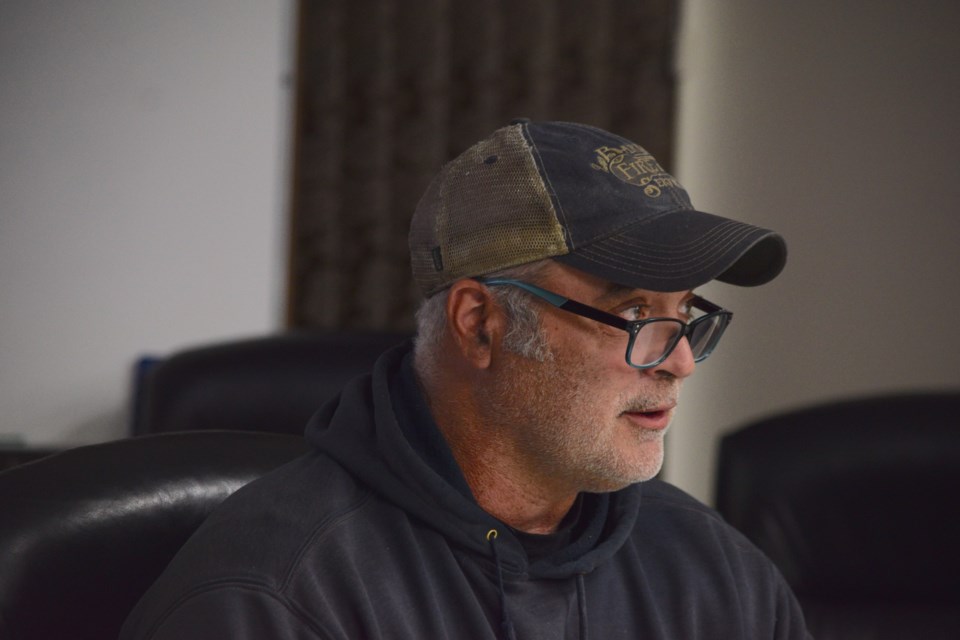Barrhead Regional Fire Services (BRFS) firefighters responded to more than 100 calls in the first quarter of 2025.
The majority of the 113 calls in the first three months of the year came from the Town of Barrhead at 106 compared to only 38 in the County of Barrhead.
BRFS chief Gary Hove told county councillors during their June 3 meeting that ambulance or medical assistants continue to lead the way with 78, with 16 originating from the county.
The next highest category is alarm investigation at 24 responses, with 14 coming from the town and 10 from the county, followed by fire responses at two, split evenly between the municipalities and one wildland or grass fire at one, which was in the county.
BRFS firefighters also responded to seven motor vehicle collisions, all on Alberta Transportation, the cost of which the province reimburses the fire department.
Hove said the fire department's latest group of recruits started their National Fire Protection Association (NFPA) 1001 course.
This is the course members need to complete if they have aspirations of becoming a professional firefighter.
He added that the department's new fire truck, a 2025 Rosenbauer commercial crew cab pumper, will while remaining in the lineup, replace Engine 33 in BRFS' equipment.
Hove said recently that he, deputy chief Ted Amos, and a county public works mechanic visited the Rosenbauer plant in South Dakota, where the $812,720 machine is being constructed.
"[The county machanic] was meticulous, which is good," he said, adding the contingent found some discrepancies or things the company will fix before it goes to its Red Deer plant where Rosenbauer will install much of its equipment.
Hove said if things go as planned, BRFS will have its yet-to-be-specified number engine's Push-in ceremony sometime in July.
Hove added that on June 2, he had a conversation with the person in charge of the province's wildfire effort, who said they were very interested in potentially asking for the new engine in future provincial firefighting task forces.
"They asked when the engine might be available for deployments," he said, adding it is a good way for the BRFS and the municipalities to recoup some of the monies they paid for the unit.
Hove said one of the challenges the department faces is getting the appropriate equipment into areas where the wildfire is, such as farmers' fields, and that the new engine will help solve this problem, as it has a relatively short wheelbase and it is a four-wheel drive.
"It really is better suited to the county for interface wildland fires," he said, adding that the last fire truck, Engine 37, was more suited for responses in the town."
Hove added it is the same reason why the new engine, as well as Engine 33, are suited for fires in the county, is also what makes them popular with the province.
Hove added that the province compensates municipalities for the use of firefighters and equipment in its larger provincial firefighting efforts.
The chief said presently, three BRFS members are part of the larger provincial wildfire suppression efforts.
Currently, Hayden Sabiston and Leo Knol are part of a task force battling the Red Earth East Fire Complex fire comprising 10 fires north of Slave Lake.
"[The province] contacted me at 1:30 a.m. [on May 29], and two hours later, they were on their way [with Tender 5]," he said, adding initially, they were on a seven-day deployment, but they were asked to extend it to 10 days.
Since then, the province has asked BRFS to extend the deployment for an additional seven days, which Hove said he has tentatively approved and is presently looking for two other members to spell them off for.
Hove said deputy chief Ted Amos, a veteran of several provincial wildfire deployments, is serving as a task leader as part of the wildfire fighting effort in Swan Hills.
Coun. Bill Lane asked why provincial campgrounds, specifically the one at Thunder Lake, are allowed to have still campfires, which is against the County of Barrhead's fire advisory, which, among other things, banned outdoor campfires.
"It is dangerous. There are trees that overhang campsites are dry and brown, yet they are allowed to have campfires," he said. "It seems to me many of the fires [we have in Alberta] have been started in campgrounds. Why can't we go and shut it down?"
Hove said provincial campgrounds have their own authority to put in what they deem are adequate fire restrictions.
Barry Kerton, TownandCountryToday.com



